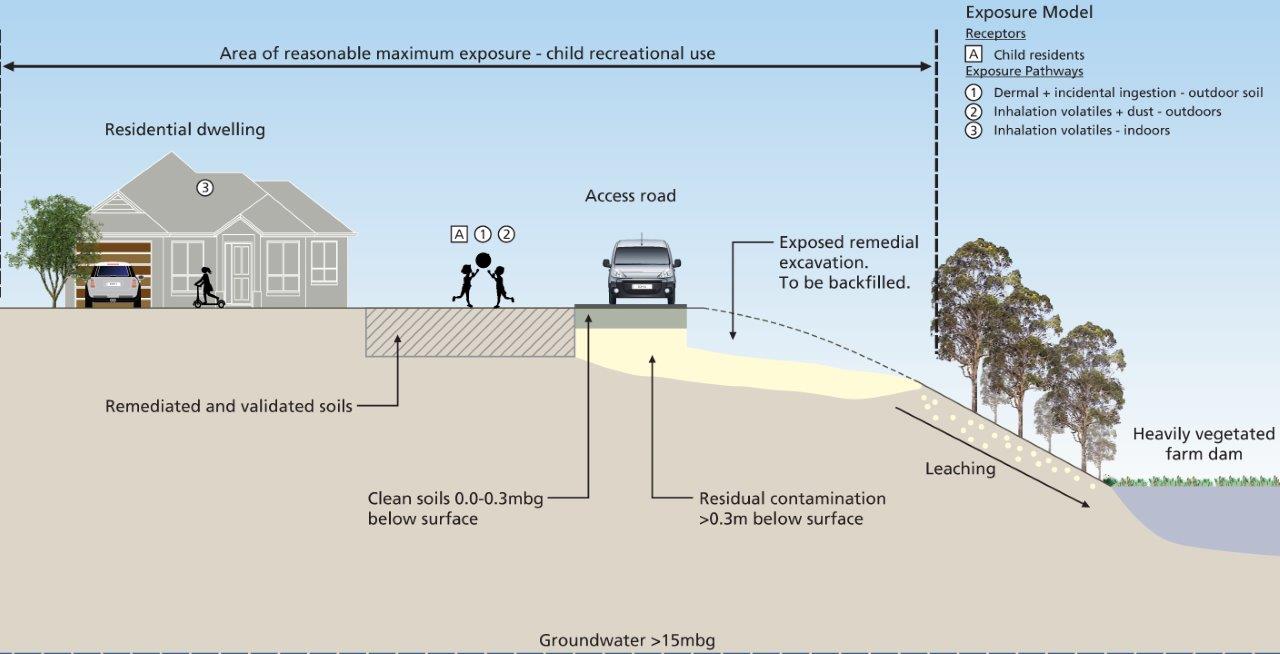Project Info
Project Description
Environmental risk assessments are highly data driven and often employ contaminant criteria that are based on conservative land use assumptions. A qualitative assessment requires a deeper understanding of site specific conditions but may provide the evidence to justify a reduced scope and less costly remediation works.
A rural residential property in NSW was unknowingly leased to tenants that used the property for illegally producing methamphetamine. The NSW Police identified the clandestine drug laboratory in the garage of the residential dwelling along with the storage and use of precursor chemicals including acetone, hypophosphorous acid, iodine salts, toluene and methanol. The police also reported contamination to land at the rear of the property resulting from the disposal of liquid wastes as evident by vegetation dieback.
The unfortunate landlord was issued a Clean Up Notice by Council under Section 91 of the Protection of the Environment Operations Act 1997. The notice required the land to be remediated to an extent considered suitable for continued residential / rural use.
The landlord engaged a consultant who made several unsuccessful attempts to remediate chemical impacted soil via excavation and disposal and eventually gave up on the project. Geo-Logix was then engaged to take the project over.
The prior consultant had removed the most heavily impacted soil. The residual contaminants of concern were iodine and phosphorous. Both chemicals remained in weathered bedrock a half a metre below grade at concentrations of one to two orders of magnitude above residential health based investigation levels. Consequently, the Council was concerned that the residual contamination presented an unacceptable health risk and requested the area be further remediated.
Geo-Logix considered the existing data and reviewed the Human Health Risk Assessment that had been developed to derive the contamination thresholds. Young children from 0 to 5 years represented the most sensitive receptor group via soil exposures (inhalation, dermal and ingestion). The key exposure assumptions used to derive the soil contamination limits included:
- Child exposure to contaminated soil occurs 365 days per year;
- 30% of the child’s skin surface is in contact with contaminated soil / dust, and the child does not wash at the end of the day;
- The child consumes 100 mg/kg of contaminated soil per day;
- 100% of the calculated vapour and dust concentrations from contaminated soil is inhaled when outdoors (4 hours); and
- 75% of the calculated vapour and dust concentrations from contaminated soil is inhaled when indoors (20 hours).
In order for these highly conservative assumptions to be considered reasonable, the surface soil over the entire residential playing area would need to be contaminated. However, the residual soil contamination represented less than 1% of the outdoor residential soil exposure area. Furthermore, this area was going to be covered with no less than 200 mm of clean soil. These factors combine to significantly reduce likely exposure and consequential risk to human health.
By using a qualitative rationale, Geo-Logix demonstrated that it was unreasonable to assume that the site still presented an unacceptable health impact to residential users through incidental exposure to contaminated soil. Nevertheless, an internal check was performed to calculate health risks based on a maximum exposure scenario using reasonable site specific parameters. This check revealed that the risk based soil concentrations were two to three orders of magnitude greater than the actual residual soil concentrations.
This example demonstrates that pragmatism can prevail with a deeper, more qualitative examination of environmental investigation levels and site conditions. In this case, Geo-Logix’s risk assessment approach allowed the primary stakeholders – the client and the council – to better understand the health risks associated with the site and, consequently, agree that no further action was required.





